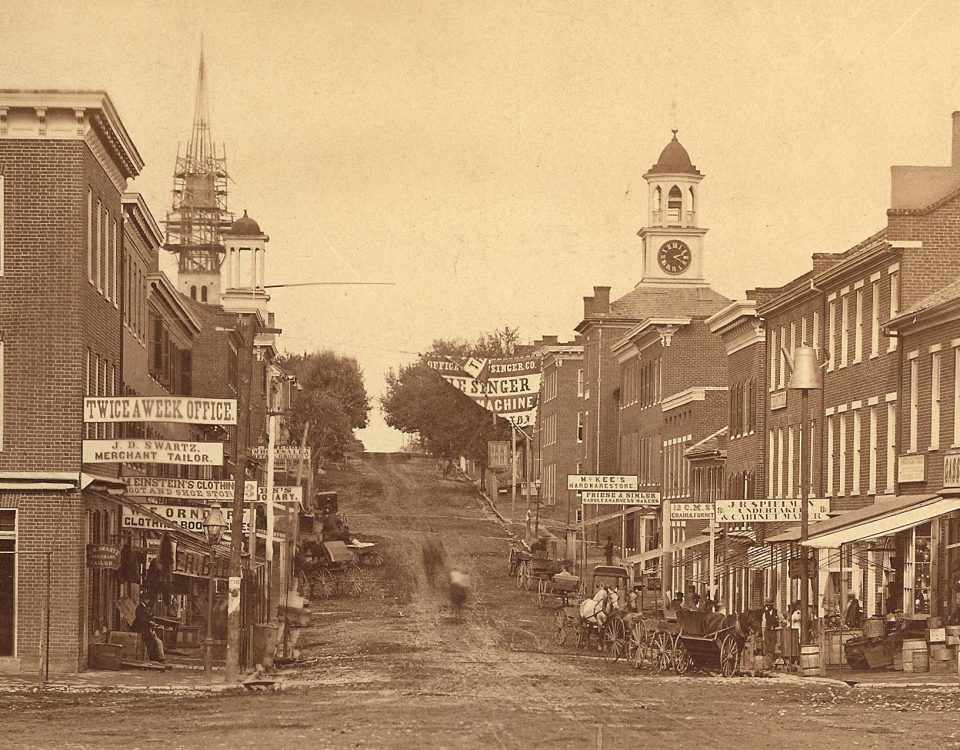When Collections Attack
By Anna Cueto
If you ever have a chance to ask a curator what they think is the most important tool of the trade, they’ll likely tell you that it’s a simple pair of gloves – at least, I know I would. For people working with museum collections, latex or nitrile gloves are worth their weight in gold. You see, despite movies and television showing how sedate museums are behind the scenes, some days curators feel more like Indiana Jones than Marian Paroo – and here is why.
A lot of the danger to be encountered in museum storage comes from previous generations using chemicals that were not known to be poisonous until recently. One of most obvious sources of old hazardous chemicals are old pharmacy bottles. While we know better today, previous generations doused ailments with everything from sulfuric acid to mercury to opium, and these chemicals can leave hazardous residues or fumes behind. It’s safest to wear protective gloves and a mask before handling old pharmacy materials. And while I shouldn’t have to say this, certainly never ingest or apply old medications. Historically, the pharmaceutical trade was not very well regulated, and this meant that you never quite knew what might be in your medications. Doses of the active ingredients might vary from pharmacy to pharmacy, and various substances ranging from chalk to daft – a substance made of powdered limestone. The Food and Drug Act would not be passed by Congress until 1906, and it wouldn’t be until 1912 that American law banned the use of fake medical claims on package labeling.
Other chemicals become volatile or emit dangerous gasses with age and degradation. White phosphorous, for example, is extremely volatile, but could be found in American-made matches up until the early 1910s. It is so volatile, in fact, that it requires professional removal by a bomb squad when it is found in old labs or museum collections. Similarly volatile are old formulations of nitroglycerin. While we know that dynamite is obviously explosive, nitroglycerin has been used in other forms since 1878 (please don’t keep dynamite in your museum in any form!) Many of our ancestors learned the hard way just how dangerous liquid nitroglycerin could be, and while early formulations of dynamite tried to stabilize the chemical, it was often unsuccessful. Cellulose nitrate is another common example. Used in film stock until the 1960s, cellulose nitrate is chemically similar to guncotton, which means old film studios and archives are full of highly flammable, self-igniting materials. The danger increases as old film stock degrades, which also releases a flammable gas into the air.
But the greatest danger comes from not having a working knowledge of old ingredients, especially in a museum whose collection ranges through several time periods and encompasses a large variety, like a history museum or historic home. The poison arsenic was used widely during the Victorian Period in medicines, home décor, beauty products, and even for preservation, so museum staff need a good working knowledge of just what is in their collection. A few examples of arsenic-treated materials housed in the Miller House collection include: beaver pelt top hats, fur stoles, and brooches made from taxidermy hummingbirds. Collectors of antique taxidermy and natural history specimens should always assume that the specimen was treated with arsenic as a preservative, and handle with appropriate precautions.
Another problematic chemical is the use of asbestos, which requires full-body protection and a respirator to handle. Asbestos was used heavily in the late 1800s and early 1900s because it was an excellent flame retardant. So products that were around heat and electrical sources from this time period often contain asbestos. One of the commercial uses for asbestos was artificial snow for use on Christmas trees, since the trees often contained live candles or early electric lights. It would not be until the 1920s that we began to discover the harmful health effects of asbestos dust, which can cause multiple fatal lung diseases.
One of the less serious but still dangerous chemicals present in many artifacts is lead. For many years, lead could be found everywhere from paint to gasoline to water and sewer pipes. Lead is what is called a heavy metal, like tin, cobalt, or copper, and when ingested in either large quantities, or in small quantities over time, heavy metals act as toxins that can cause lasting or fatal damage to your organs and nervous system. Many artifacts within a museum collection can contain lead in small amounts. In the WCHS collection, we have a pieces of pewter tableware and cutlery. Lead was just one of many heavy metals that would create the tin/heavy metal alloy that makes up pewter. People using pewter plates and cups, mostly working class citizens, would have unknowingly ingested small amounts of lead at each meal. We also have a large collection of local Shenandoah Movement pottery. Pieces of local earthenware were often sealed with a lead-based glaze to keep them watertight. This glaze would leach lead into drinks and food stuffs kept in clay vessels. At the end of the 1800s, scientists began to discover the link between lead and neurological damage, and this knowledge was solidified in the early 20th century, when leaded gasoline caused health and environmental problems. Ever since, we’ve been trying to clean up the lasting effects of our lead usage. Lead is an extremely stable element, and can actually remain behind in high concentrations for thousands of years. Now, the rate of lead absorption through the skin is relatively low, especially compared to ingestion and inhalation. So as long as you’re not actively licking your leaded museum artifacts (do I have to tell you not to do that?), it is not as much of a concern as with other, more potent toxins. However, do you really want to take that chance? Just wear your gloves.
Curators, archivists, and librarians come across these and numerous other hazardous materials and situations, and need to know how to handle these artifacts safely, in order to protect the collection and the people in the museum. So the next time you see a curator wearing gloves, it’s not just because we’re trying to protect the collection from us – sometimes, we’re protecting ourselves from the collection!



















